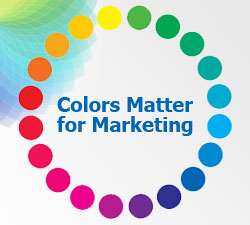 Choosing the right color has a profound impact on the buying habits of consumers. Colors evoke emotions that trigger a feeling that matches an absurdness for the consumer to buy.
Choosing the right color has a profound impact on the buying habits of consumers. Colors evoke emotions that trigger a feeling that matches an absurdness for the consumer to buy.
Color Strategies for Marketing
A strategies that increase sales include attention on color choice. Businesses have long relied on the play of colors as a major role in marketing campaigns. The psychological aspects of color stir emotions to help build brand relevance and motivate purchasing from consumers. The colors that help generate positive sales include red, blue, pink, yellow, green, purple, gold, orange, brown, and black. Each one has an associated emotion or mental trigger that helps increase brand recognition and play into motivating buying. Clever color combinations put more than one color with others that fit well with the product or service marketed to consumers. The implementation of marketing through colors in brochures, websites, brochures, flyers, ads, and more needs careful planning. The right color goes with the right emotion that fits well with the consumer brand.
The Emotional Aspect of Buying
Consumers who buy on impulse will by emotion. The emotion falls into one or more of three categories; want, need, fear of loss. People want to buy things to satisfy an emotional desire. The emotional desire often is not related to satisfying a necessity. Things needed satisfy what consumers find necessary. What may be necessary for one consumer may not be necessary for another consumer. The need is identified by an emotion that triggers a need. For example, eating is a necessity. A candy bar is not a necessity, but may be felt needed to stave off hunger. To avoid a loss involves reducing future costs. For example, repair and maintenance will avoid costly emergency repairs in the future. Proactive consumers plan by reducing costs and inconvenience.
Branding and Consumer Culture
Colors that evoke an emotion and unmatched to the consumer brand will most certainly fail. A consumer identified packaging with mental images or emotions of what the product should seem like. This brand identification help build trust in the branded product. Sometimes products being sold will have packaging changed to make it seem new, updated, and more relevant to today’s style. Rebranding for existing products prevent obsolescence and staleness of products. The brand of a product must change to fit the culture of communication for consumers. The color schemes of decades ago are much different from the color schemes of today. The colors that identify emotion occasionally change. Some primary colors stay the same. For example, the color green continues to reflect calmness, serenity, and peace.
Choosing The Right Color
The color schemes of websites, social media profiles, online newsletters, and more evoke emotions. A mix of colors combine emotions to fit the right branding. The color red gets people’s attention with a sense of power. Blue evokes a sense of trust and mixes well with other complimentary colors. Pink traditionally leans toward the female persuasion. The power of yellow commands an audience’s attention with confidence. The versatility of the color green has a warm and inviting feel to it. Green fits well with health, environment, financial freedom, and goodwill. The Royalty of purple adds an element of elegance and prestige. Gold symbolizes wealth and pedigree and matches will with Purple. The attention getting color of orange shows energy and a cutting-edge atmosphere. The earthy tone of brown provides relaxation and comfort. The versatility of black works well with modern, traditional, exciting or relaxing schemes.












